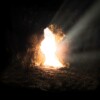
The Future of Christian Learning: An Evangelical and Catholic Dialogue
The Future of Christian Learning: An Evangelical and Catholic Dialogue by Mark Noll and James Turner, edited and with an introductory essay by Thomas A. Howard, was born out of a lecture series at Gordon College. Howard situates the conversation optimistically within a developing rapprochement between Evangelicals and Catholics.
Past Protestant-Catholic hostilities took place against a shared backdrop of general cultural religiosity. However, as more aggressive forces of secularism, scientism, and ethical utilitarianism have made themselves felt, both in the academy and in the broader public arena, erstwhile non-speaking siblings have willy-nilly found themselves cooperating on a range of policy questions and social issues, even if they might disagree on tactics, solutions, or priorities (13).
Though small in pages, the book explores salient issues concerning Christianity and the life of the mind from the vantage of an evangelical Protestant and a Roman Catholic scholar. As one would expect from two historians, the issues are traced to identify historical congruence and divergence between Catholic and Protestant academic pursuits. Both authors also survey current relationships and dynamics and suggest future prospects. Noll provides, within limited space, a compelling and accessible backdrop to the checkered record of Christian learning and relations from the epochal breach of 1521.
The tragedy in 1521 at the Diet of Worms was that both Martin Luther and Johann Eck were correct. Late medieval Catholic Christendom was threatening the gospel and could have led to the evisceration of true Christianity; Protestant individualism harbored the potential to promote spiritual chaos and eventually did lead to weakness in the face of outside cultural forces. (68)
Turner sees somewhat less promise than Noll for genuine evangelical and Catholic scholarly engagement. For both, it is more likely that prospects reside with interpersonal rather than institutional exchange or collaboration.
The concept of Christian learning separates Noll’s and Turner ’s distinctive treatments of evangelicalism and Catholicism. Is Christian learning fundamentally learning that takes Christendom and Christianity as its object, or is it an approach that frames all learning and knowledge from a Christian perspective or worldview? Turner argues from the former and Noll from the latter point of view. Noll defines Christian learning expansively but requires a theological lens. He believes genuine Christian learning requires “a Trinitarian understanding of God and also of the world as fully understandable only in relation to the Trinity” (28). Noll assumes that what we call “learning” and identify as knowledge is always an interpretation and as such needs to stay within a framework close to the source of all reality and its legitimate interpretation – the God who made, sustains, and redeems it. Turner finds legitimate the research and teaching by those who are not themselves believers but who characterize things about Christendom and Christianity accurately and well. While evangelicals may find this valid, Turner fails to address whether Christian learning might also use a Christian framework to understand and critique learning about not only Christianity but all aspects of nature and culture, divinity and humanity.
Turner’s approach to knowledge divulges his Thomist distinction between nature and grace. Christian sensibilities and sensitivities are focused in the realm of grace – the realm in which Church and the sacred operate. Yet his Catholic sacramentalism assumes that the world and all the knowledge it contains to be a sacrament or a door through which to approach the God of the universe. The created world intrinsically is not evil and a waste of time; it is good and well worth our study. Furthermore, the human mind, Christian or not, is also inherently good. These assumptions lead to a practice wherein the natural world, including that of human action and activity in secular (that is, non-sacred) things, does not require a distinctively Christian framework for investigation, critique, and interpretation. For the Catholic scholar there is no required preamble that articulates a biblical worldview or credo distinctly. Consequently, sometimes it may be difficult to distinguish the Catholic from the non-theistic scholar. The evangelical scholar will confess, even insist, that Christian learning is approached and interpreted differently because it is viewed through the lens of personal, appropriated faith.
The nature-grace distinction provides a lens through which Turner summarizes and characterizes Roman Catholic institutions of higher learning. It helps one to see why Turner seems pleased that most Catholic institutions require no faith commitment either from students or faculty because, with the exception of religious matters, a faith commitment does not significantly affect the search for truth and the assessment of fact and theory in most of the curriculum. This same distinction seems also to explain why Turner characterizes with some sense of approval Roman Catholic institutions of the past few decades to be motivated by a desire “to preserve a distinctly Catholic character while fully integrating into American academe” (76). If most of what colleges and universities offer as courses of study and lines of research exist in the realm of nature, then Catholic institutions have no distinctive mission in what they teach and learn, but only in what general ethos and environment they create for teaching and research.
While Turner situates himself in the Thomistic tradition to explain Catholic learning and higher education in America, Noll separates himself from certain historical images and perhaps lingering phantoms of an American evangelicalism that appropriated uncritically several elements of the recurring heresy called gnosticism. His treatment of these tendencies is developed more fully in The Scandal of the Evangelical Mind (1994). While the reasons remain less than clear how it was that many American evangelicals in the past introduced gnostic heterodoxies into the arena of learning and higher education, Noll succeeds in bringing forth the central theological issues that should guide the framing of Christian learning and higher education: the doctrines of Creation and the Fall, the Incarnation of Christ and he implies the doctrine of the Ascension of Christ to a position of rule over the creation in this age and the age to come. In not conceding to the schema of a nature-grace distinction, Noll demonstrates how a renewed mind is a necessary but not sufficient element in the formation of Christian learning. That mind must then develop a conceptual framework based upon theological constructs referred to above and appropriate to the particular objects of its investigation, for example society, human personality, public policy, literary form, and so on.
Differences between evangelical and Catholic approaches to learning find expression in the teaching enterprise. The evangelical considers the role of university professor not simply to impart information and cultivate the intellect, but to guide and nurture students in their spiritual formation. To the Catholic professor his or her role is primarily, perhaps exclusively, intellectual formation. Historically the Catholic priest’s role was to develop the flock spiritually. For this reason, the evangelical college requires students and professors committed to the evangelical faith with implications for personal and collective spiritual formation. The Catholic university, Turner points out, can have more non-Catholics than Catholics among its students and staff. This is no minor difference between the Catholic and evangelical contexts for learning.
Both Noll and Turner make some attempt to determine whether evangelical and Catholic universities can relate in mutually advantageous ways. Noll suggests that there is the possibility of interaction if Catholic scholars move toward reasoning from Scripture as well as from nature. Academic areas where such interaction is already occurring are philosophy, history, literature, and political theory. Turner, on the other hand, is less optimistic about meaningful interaction between evangelical and Catholic institutions. He feels that Catholic universities, which are usually fairly large, research universities, seek interactions with the larger, prestigious institutions like Harvard or Princeton. Recognizing that these profound theological divergences and significant differences in “standing and vision” make institutional collaboration unlikely, Turner ’s recommendations are especially pertinent, as he promotes cooperation between individual faculty members (81). Whereas status differentials may preclude the possibility of institutional interaction, scholarly journals and professional conferences afford individual scholars the chance to unite in efforts towards better scholarship and more efficacious pedagogy. Specifically, because evangelicals and Catholics are unified in their commitment to the doctrine of Creation, Turner asserts that they, as well as Jews and Muslims, should also share a commitment to demonstrating the unity of all knowledge(91ff.).
One must question, however, whether Turner carries this argument far enough. While the doctrine of Creation is surely motivation for the Theist to pursue interdisciplinary understanding, the ultimate motivation for any Christian, whether evangelical or Catholic, ought to be a properly functioning Christology. Recognizing that Jesus is the very image of truth (John 14:6) and that only in Christ can one find “all the treasures of wisdom and knowledge”(Colossians 2:3), all Christians possess a divine mandate to seek the embodiment and unity of truth in the person of Jesus Christ. In addition, the priesthood of the individual believer through Christ and the reasonable claim that God desires to communicate truth to all of his people suggest that one’s views on the nature and perspicuity of Scripture and the role of the Holy Spirit influence those interdisciplinary discussions even further.
Perhaps the single most striking feature of Noll’s essay is the statement that neither side of the evangelical-Catholic debate has a monopoly on truth; alone, neither side can promote the flourishing of both Christian faith and scholarship adequately. The book, however, leaves unanswered the question whether evangelical and Catholic collaboration should occur, if it can. What is the value to the evangelical or the Catholic to pursue this interaction? A vision of unity offers hope for consonance and alliance in spite of the perceived dissonance and alienation if truly “In him [Christ] shall true hearts everywhere their high communion find, his service is the golden cord close-binding all mankind.”1 That chapter remains to be written. Thoughtful readings of these essays may elicit productive responses and contributionsto that project.























